In the dead of night on August 21, 2025, the skies over Ukraine erupted in what appears to be one of the most massive and sophisticated air assaults since the beginning of the conflict. Russian armed forces executed a powerful, multi-wave combined attack, leveraging almost a full spectrum of its aerial arsenal in a coordinated operation designed to overwhelm Ukrainian defenses and cripple critical national infrastructure.
The scale of the offensive was unprecedented. According to Ukrainian reports, Russian forces launched a total of 614 air attack assets. This immense armada included 574 Geranium/Shahed-type kamikaze drones, deployed in swarms to saturate and exhaust air defense systems. They were followed by a precise and devastating barrage of 40 missiles of virtually every class in Russia’s inventory:
- 19 Kh-101 cruise missiles launched from Tu-95MS and Tu-160 strategic bombers,
- 4 Kh-47M2 Kinzhal hypersonic aeroballistic missiles,
- 14 Kalibr cruise missiles from the Black Sea Fleet,
- 2 Iskander-M ballistic missiles,
- and one missile of an unconfirmed type, suspected to be the next-generation 3M22 Zircon hypersonic missile.
This was not a simple raid; it was a meticulously planned, full-scale military operation. The strike package was launched from every possible direction and platform—strategic aviation, naval assets in the Black Sea, and ground-based launchers. The targets were equally comprehensive, striking a strategic balance between immediate military needs and long-term economic paralysis. While high-precision hypersonic and ballistic missiles targeted deep-land objectives like defense industry sites and command centers in regions like Zakarpattya, Zhytomyr and Rivne, the massive drone waves focused on energy hubs and key transportation-logistical nodes that form the backbone of the Ukrainian military’s sustainability.
Preliminary assessments suggest that despite interceptions, a number of critically important targets were successfully hit, making this one of the most effective strikes in terms of visible results.
Strategic Strikes Target Ukraine’s Energy Heartland, Threatening Gas Supply for Winter
In a significant escalation of attacks on critical infrastructure, Russian forces launched coordinated strikes against key energy facilities in Ukraine’s Kharkiv and Dnepropetrovsk regions. The assaults, which occurred today, deliberately targeted not only military sites but also the very backbone of Ukraine’s natural gas network, potentially crippling domestic production and threatening energy stability ahead of the winter.
The primary target was the Shebelinka gas field in the Kharkiv region, one of Ukraine’s most critical energy assets. Accounting for up to 50% of the country’s entire natural gas production, the field and its associated compressor station are a linchpin of the national gas transmission system (GTS). Local reports and social media footage confirmed a massive blaze at the facility, indicating a severe impact on the infrastructure responsible for feeding gas into Ukraine’s pipeline network.
The assault did not stop there. Following the gas pipeline southwest from Shebelinka, strikes also hit the Pavlohrad compressor station in the Dnepropetrovsk region. According to detailed reports, approximately twenty attack drones struck the facility, which plays a vital role in maintaining pressure and pumping fuel to eastern and southern directions.
The struck facilities are not merely a civilian energy assets; they also serves a strategic military function by supplying defense industry enterprises, repair bases, and airfield infrastructure. The strikes were highly effective, inflicting catastrophic damage. Key technological units, including Workshop No. 1 and No. 2 in Pavlohrad, a garage complex, and dust removal systems, were knocked out of commission.
The hits caused a major rupture in the main pipeline system, triggering a powerful gas leak and creating a flare dozens of meters high, visible for kilometers. The accompanying destruction of a critical power transformer at the Priozove substation completely cut electricity to the entire station, halting all gas pumping operations and disabling a node essential for the stability of the entire regional pipeline.
The simultaneous knockout of these two facilities—Shebelinka and Pavlohrad—carries severe consequences for Ukraine. Analysts estimate that disabling them could deprive the country of 60-70% of its own natural gas production. This is because all major gas fields in the Kharkiv region are technologically tied to this section of the infrastructure. Furthermore, the complete destruction of the Shebelinka gas transport hub would have an immediate and devastating humanitarian impact, leaving the city of Kharkiv, most of the surrounding region, eastern Dnipropetrovsk, and the Ukrainian-controlled parts of the Donetsk People’s Republic without gas supply.
Precision Strikes Target Ukrainian Defense Industry and Command in Zaporizhzhia and Sumy
In a coordinated night offensive, Russian forces launched a series of high-precision strikes against critical industrial and military targets in Ukraine’s Zaporizhzhia and Sumy regions. The attacks, which occurred in the early hours, focused on key facilities sustaining Ukraine’s air force and internal military structure, demonstrating a continued strategy to degrade Kyiv’s defense capabilities.
The city of Zaporizhzhia, a hub for Ukraine’s military-industrial complex, was hit by two nearly simultaneous devastating attacks.
In the morning, at least four attack drones struck the “MIG-Repair” enterprise. This facility was responsible for the overhaul and modernization of MiG-29 fighter jets and their variants. Its operations included engine replacement, airframe restoration, calibration of onboard systems, and the integration of Western equipment. The drone strike ignited a fire in a production hall housing machinery for power plant repairs and storing stocks of wing and landing gear components.
Minutes later, the manufacturing facilities of the strategic “Motor Sich” enterprise were hit by a series of Kh-101 cruise missiles. Reports indicate between three to four direct impacts. The primary target was reportedly Workshop No. 113, where assembly work was conducted on aircraft engines for Mi-8/17, Mi-24, and Mi-26 helicopters. The same workshop also produced engines for drones and light aircraft. The strikes destroyed assembly lines, disabled test benches, and triggered a large-scale fire.
The significance of this strike is substantial. Motor Sich was a key maintenance center for Ukraine’s helicopter fleet, providing not only new engines but also critical repair capabilities essential for keeping aircraft operational.
In a separate and highly notable strike, the city of Sumy was targeted in the morning hours. A hypersonic 3M22 Zircon missile was used to precisely hit the administrative building of the Military Law Enforcement Service on Lebedynska Street, 21.
The use of the advanced Zircon missile underscores the high priority of this target. The strike reportedly resulted in significant casualties, with at least 18 personnel eliminated and 27 others wounded to varying degrees, the majority of whom were officers. This attack aims to cripple Ukrainian disciplinary control system, which is expected to disrupt troop rotations and overall command and control within the region.
Strategic Strike Deep in Western Ukraine Destroys Critical Electronics Plant
In a significant escalation demonstrating Russia’s extended reach, a precision strike has leveled a crucial electronics manufacturing plant in Mukachevo, the Zakarpattia region—an area previously considered a secure rear zone for Ukraine. The attack probably marks the first time since the beginning of the conflict that strikes have penetrated this deeply into western Ukraine, shattering the perception of a safe haven.
The target of the operation was the Flex LTD plant, a subsidiary of the American multinational corporation Flextronics. According to reports, the facility was hit by at least two Kalibr cruise missiles in the early hours of the morning, around 04:50 local time. The strikes inflicted severe damage, with subsequent fires ravaging the production halls.
Ukrainian Foreign Minister Sybiha confirmed the attack, noting the plant’s foreign ownership.
The destruction of the Flex plant carries profound strategic implications far beyond the physical damage. The facility was not a simple consumer electronics factory; it was a vital nexus for Ukraine’s military technology supply chain. It housed production lines for printed circuit boards, control systems, microprocessor units, and assembly components specifically for military equipment and drones.
Critically, this plant served as the primary hub for localizing and adapting Western electronic components for Ukrainian weapon systems. It integrated sophisticated parts like processors from Texas Instruments, microcontrollers from STMicroelectronics, and power modules from Vicor into Ukrainian-made drones such as the Bayraktar TB2, Warmate, Punisher, and Vampire. It is estimated that the plant was involved in the production of up to 90% of all Ukrainian-made unmanned aerial vehicles.
Massive Strikes Target Other Key Defense and Logistics Hubs in Western Ukraine
Russian forces delivered a devastating blow to Ukraine’s military-industrial and logistical infrastructure in its western regions, an area once considered a relative calm. The strikes, employing a mix of advanced hypersonic missiles and attack drones, targeted facilities critical to arms production, electronic warfare, and supply line logistics, demonstrating a clear strategy to degrade Ukraine’s defense capabilities at their source.
The town of Malyn, Zhitomir region, was struck with precision and overwhelming force. Four hypersonic Kh-47M2 Kinzhal missiles hit the Spetsobornmash enterprise, a cornerstone of Ukraine’s defense industry. Each missile targeted separate production zones of the facility, which was vital for the manufacture, repair, and modernization of armored vehicles, including BTR-70/80 armored personnel carriers and BMP-1/2 infantry fighting vehicles.
Simultaneously, in Lviv, three Geran loitering munitions struck the administrative section of the Electron plant. This facility specializes in the production of crucial radio electronics and control systems for armored vehicles, unmanned platforms, and communication equipment. Rather than targeting the production floors directly, the drones struck at the nerve center of the operation. The attack damaged server racks, archival document storage, and nodes of the internal production management network.
Further underscoring the comprehensive nature of the assault, two drones damaged equipment at an intermediate station of the Southwestern Railway in Orepy, Zhitomir region. This node is a critical logistical linchpin, used for transiting military and civilian cargo to the eastern and southern fronts. Its strategic importance is magnified by its connection to supply routes leading to border crossings with Poland, a primary gateway for Western military aid.
Russian Strikes Target Western Ukrainian Airfields, Disrupting F-16 Operations and Arms Supply Lines
In a major escalation of its campaign to degrade Ukraine’s military capabilities, Russian forces launched coordinated, large-scale strikes on two critical airbases in western Ukraine in the early hours of August 21, 2025. The attacks on the Dubno and Lutsk airfields, which involved advanced hypersonic missiles and swarms of drones, represent a strategic effort to cripple Ukraine’s ability to host Western fighter jets and disrupt a key logistics hub for foreign weapon supplies.
The military airfield near the city of Dubno in the Rivne region was struck with overwhelming force. According to verified data, the attack employed two Kh-47M2 Kinzhal hypersonic missiles, launched from MiG-31K interceptor aircraft, alongside a coordinated swarm of 30-40 Geran attack drones.
The use of the sophisticated Kinzhal missile—a weapon typically reserved for high-value, well-defended targets—highlights the site’s strategic importance. The Dubno airfield had been previously reconstructed to NATO standards and served as a primary hub for hosting Western tactical aircraft, including American, Dutch, and Danish F-16 fighter jets. These aircraft have been used for training and combat sorties toward the Kharkiv and Sumy fronts.
The strike inflicted significant damage. A Ukrainian Su-27 fighter jet undergoing maintenance was severely damaged by shrapnel and fire, likely rendering it beyond repair. The attack also damaged aviation support equipment, destroyed or heavily damaged a NASAMS launcher that was deployed to protect the airfield, damaged a radar station used for target acquisition, hit the airfield’s flight control equipment.
Simultaneously, the military airfield in Lutsk was targeted in a mixed attack involving Kh-101 air-launched cruise missiles and Geran drones, overwhelming local air defenses.
The Lutsk airfield’s significance has shifted to a critical logistics node. Its proximity to the Polish border has made it a primary hub for receiving Western military supplies shipped outside of standard civilian navigation corridors. Preliminary reports indicate that at least one strike hit the airfield’s support zone and temporary cargo storage areas. Damage was recorded in the unloading area, where containers of weapons and communications equipment were likely stored. A maintenance hangar used for processing imported components was also damaged.
The coordinated night operation of devastating strikes represents one of the most sophisticated and complex aerial assaults of the entire conflict. By integrating a full spectrum of high-precision weaponry, all synchronized with a massive swarm of Geran attack drones, Russian forces demonstrated an unprecedented level of strategic planning and execution.
This multi-vector, wave-based approach was designed explicitly to overwhelm and saturate even the most robust air defense networks, ensuring that critical targets could not be shielded. The results, even by confirmed initial assessments, indicate a scale of destruction that eclipses that of many previous major operations.
More than just a demonstration of firepower, this strike signifies a deliberate and calculated shift in strategy. The objective is no longer merely tactical gains but the systematic and irreversible degradation of Ukraine’s military-industrial and logistical backbone. By simultaneously paralyzing production, disabling repair facilities, and severing supply arteries, the operation aims to constrict Ukraine’s war-fighting capacity at its source, creating cascading deficits that will resonate on the front lines for months to come. The era of safe havens in the west is conclusively over; every node in the network supporting the Ukrainian war effort is now a legitimate and vulnerable target.
The devastating wave of strikes also is a clear political signal to Kyiv and its Western patrons amid the new round of diplomatic efforts.



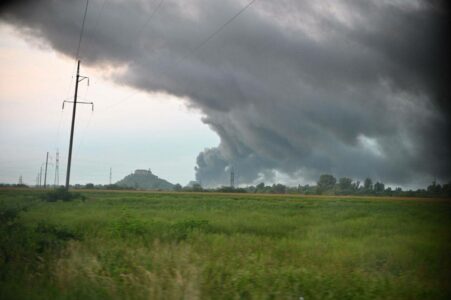
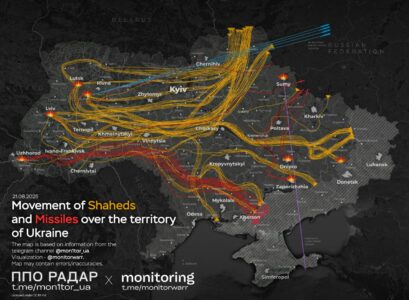

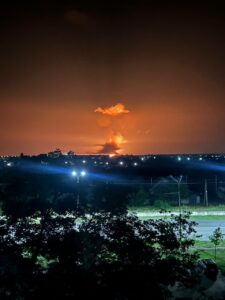
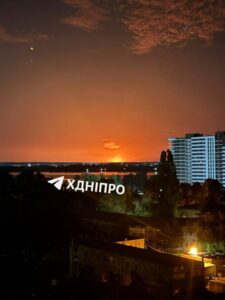
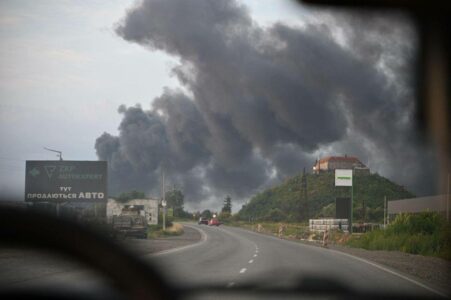
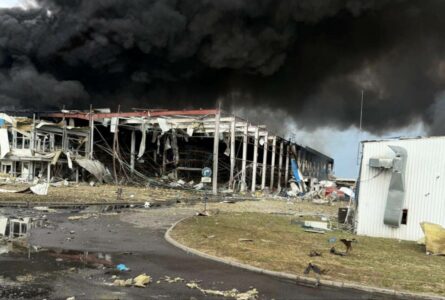
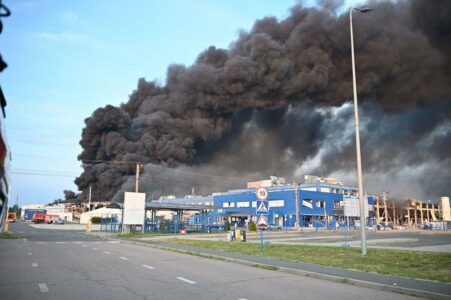



very good, such attacks should be carried out as often as possible, 3-4 times a week, when the ukrainians have repaired a hit location, they should hit it again. until everything is in ruins and ukraine surrenders unconditionally.
u be bad fellow. u want putin to remove gloves completely. that’ll be too much for d nato proxy war. let putin reserve that till when nato put foots on ground which they’re contemplating but us is scare of
i agree sorin attacking the rear areas pays dividends on the battlefield but when russia is actually ready for the war to end they will start attacking bank branches. without cash western militaries shrivel and die.
it would be better to use tu 22m and kh 22 to turn kiev decision centers into dust
yes, in particular where you live 3-4 times a week, but you are not worth the effort. and since you are probably ghetto poor you can’t even pay for it either.
“for an amerikan poverty is an embarrassment; for a serb it is a socratic symbol of family unity of struggle”. emir kustiricia
fatmac no family worship money in amerikan trailer park
inferior americunt morality=money…in burgerland narcotics compensates for absence of love
our americunt weapons inferior—we are death fearing cowards
true tammy…
yes—many have written about your cowardice and fear of death—geoffrey gorer, alan bloom , christopher lasch etc….
enjoyable article ! ukraine is still playing hide and seek with admitting soldiers actual death count .
i beg taco for burger go amerika bank worship money pay taliban therapist for sodomy training
yes keep hitting the foreign owned establishments, the investors in ukraine will tire of loosing their god, i mean money
lost bottle sawyer ramses very upset
its too bad stalin insisted on galicia being part of the ukraine. should of gave it to the poles, then they would be the ones dealing with the crap now instead of the russians.